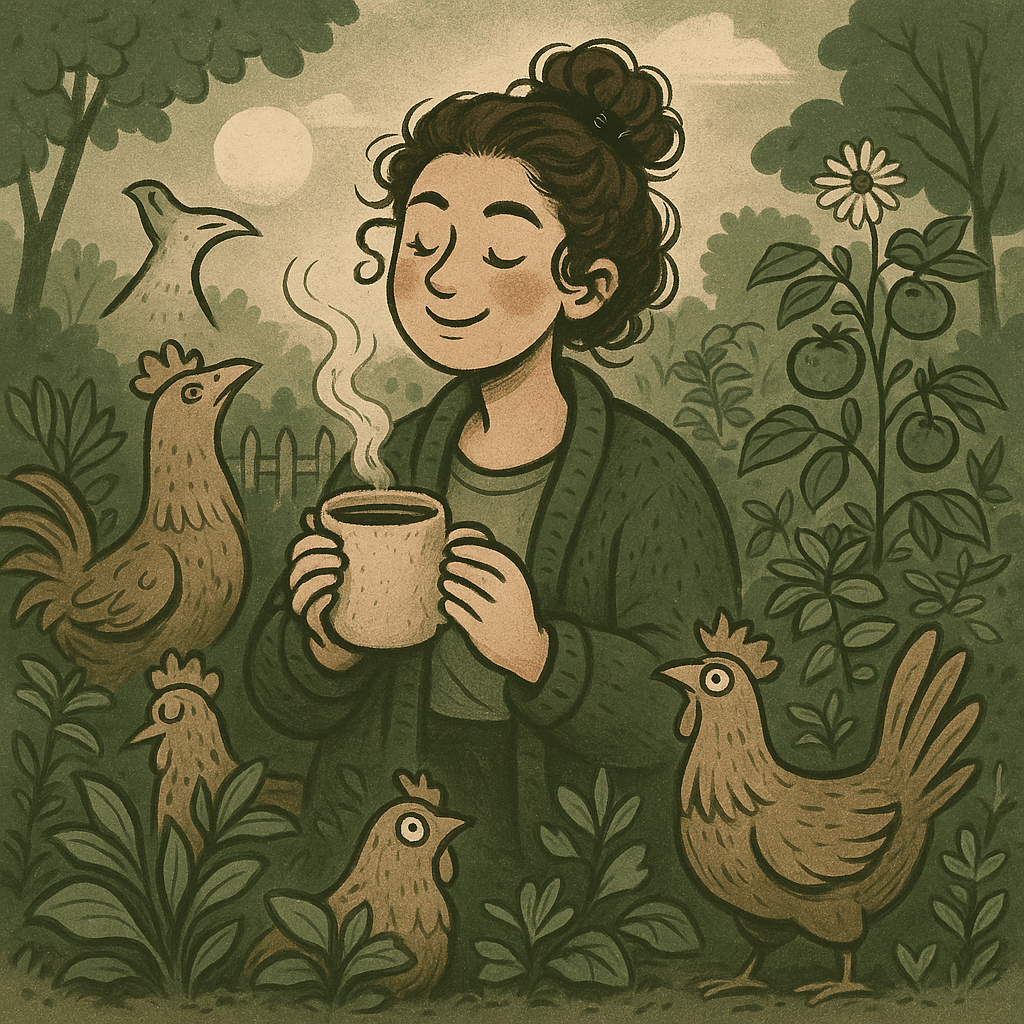
This site uses affiliate links and I may earn a small commission when you use my links and make a purchase without incurring additional fee yourself. Many thanks for supporting this website.
Please click here for more details.
Can Chickens Eat Mulberries—as Well as Trees and Leaves? A Complete Guide to Natural Chicken Diets
Welcome to the vibrant world of backyard chicken nutrition, where your feathered friends' menu can be as rich and wild as your own garden. Chickens are natural foragers with surprisingly adventurous palates. Given the chance, they’ll happily peck their way through berries, bugs, greens, and even the occasional tree leaf.
So, can chickens eat mulberries? Absolutely. But there's more to it than tossing a few fruits into the coop. In this guide, we’ll dive deep into the benefits of feeding your flock mulberries, safe tree leaves, and natural greenery—transforming your chicken run into a cost-saving, nutrient-packed buffet.
Can Chickens Eat Mulberries—as Well as Trees and Leaves? A Complete Guide to Natural Chicken Diets
Understanding Chicken Diets
Natural Foraging Instincts
Chickens are omnivores by nature. In the wild, they hunt for grains, seeds, insects, worms, small critters, and greenery. This natural foraging keeps them moving, scratching, pecking, and mentally engaged.
By creating a foraging-friendly environment in your chicken run or letting them free-range under supervision, you mirror their natural habitat. Bonus: it reduces your feed bill. Chickens instinctively go for the good stuff—berries, bugs, and leafy greens—when given the chance.
What Nutrients Do Chickens Need?
A well-balanced chicken diet includes:
Protein for muscle growth and egg production
Carbohydrates for energy
Vitamins (especially C and K) for immunity and bone health
Essential minerals like calcium, iron, and potassium
Mulberries and tree leaves aren’t just tasty distractions—they’re surprisingly nutrient-dense. When combined with quality feed, they help round out a chicken’s daily dietary needs.
Why Variety Matters
Just like us, chickens thrive on variety. Mixing in natural foods like mulberries, tree leaves, and edible weeds boosts egg quality, enhances fertility, and keeps meat birds growing strong. Plus, feeding from your garden cuts commercial feed costs and adds enrichment to their day. Healthy birds are productive birds, and variety makes a noticeable difference.
Mulberries and Chickens: A Perfect Match
Nutritional Power of Mulberries
Mulberries from the Morus genus (white, black, and red varieties) are packed with:
Vitamin C
Antioxidants
Potassium & iron
Natural sugars for quick energy
Amino acids that help with feather growth and muscle development
These juicy little berries are sweet, nutrient-rich, and flock-approved.
Mulberry trees are also fast-growing and hardy—perfect for chicken owners. They offer shade, shelter, and seasonal fruit drops your chickens will adore.
Health Perks for Poultry
When chickens snack on mulberries, they gain:
Stronger immune systems
Healthier feathers
Improved egg production
Better digestion
A more vibrant appearance thanks to antioxidants
They’re low in calories but rich in vitamins, making them an ideal seasonal supplement. Just be sure to collect and offer ripe mulberries, pesticide-free and fresh.
How to Feed Mulberries to Chickens
Introduce slowly to avoid upset tummies
Only offer ripe fruit (no moldy bits!)
Use as a treat—not a staple
Scatter on the ground to stimulate natural foraging
Toss into the compost to create nutrient-rich soil for future plantings
Can Chickens Eat Tree Leaves and Bark?
Safe Tree Options
Chickens can safely munch on parts of several tree species. The mulberry tree is the MVP, offering nutritious leaves and fruit. Other options include:
Nut trees like hazelnut (leaves only)
Fruit trees like apple or pear
Sassafras leaves in moderation
Large trees provide shelter, natural cooling shade, and forage options—especially valuable in hot summers.
Nutritional Role of Tree Parts
Tree leaves and bark (when safe) offer:
Fiber for gut health
Trace minerals
Digestive stimulation
Environmental enrichment
They’re not main dishes, but they add diversity and interest. Just like rotating your chicken treats, rotating trees keeps things fresh.
Warning: Toxic Trees Exist
Avoid trees like:
Yew
Oleander
Black walnut (leaves and husks)
Cherry laurel
Red maple
Do your research before planting or letting chickens roam freely around unfamiliar trees. Always remove fallen toxic leaves from their area—especially during autumn.
Can Chickens Eat Leafy Greens?
Greens Chickens Love (and That Love Them Back)
Leafy greens are a fan favorite for your flock. Top choices include:
Kale
Lettuce
Dandelion greens
Spinach
Swiss chard
These greens are loaded with Vitamin A, Vitamin K, calcium, and moisture—all essential for strong bones, vibrant feathers, and hydration during hot weather.
Why Greens Are a Must
Support egg-laying and shell strength
Improve immunity
Aid digestion
Keep chickens cool and hydrated
Add color and shine to plumage
Greens are also a fun boredom-buster that reduce the risk of feather picking and aggression.
How to Serve Greens Safely
Wash thoroughly
Avoid roadside or pesticide-treated areas
Rotate varieties weekly
Don’t feed slimy or wilted greens
Avoid anything purple-spotted or moldy
How to Integrate Mulberries, Trees & Leaves Into Their Diet
Balance Is Everything
Mulberries, trees, and leaves are amazing additions—but they should supplement, not replace, your chickens’ main feed.
Use a good-quality commercial layer or grower feed as a base. Then enrich their diet with foraged goodies.
Adjust the balance depending on:
Age (chicks vs. adults)
Season (more greens in summer, more carbs in winter)
Purpose (eggs, meat, or pets)
Set Up a Safe Foraging System
Make a chicken-safe landscape with:
Rotating grazing areas
Shade trees
Vertical gardens or container greens
Mulberry trees along the perimeter
Enclosed compost piles for scratching fun
This keeps them engaged, nourished, and out of trouble.
Monitor Their Health
As you add new foods:
Watch for changes in poop, energy, or appetite
Check for allergies or digestive issues
Monitor egg shell quality
Track weight in young or broody hens
Keep a journal if you’re testing out new foods—it’s surprisingly helpful for long-term chicken care.
Final Thoughts: Yes, Chickens Can Eat Mulberries—and Much More!
Feeding your chickens mulberries, safe tree leaves, and leafy greens isn’t just allowed—it’s encouraged! These natural foods support better health, reduce feed costs, and give your chickens a richer, more varied life.
Just remember:
Start slow
Stick with safe species
Keep everything pesticide-free
Balance natural foraging with complete feed
Observe and adapt as needed
Your chickens will reward you with glossy feathers, strong eggs, and happy, curious clucks every day.

Zia Paola
Zia Paola is a burnout survivor, chicken enthusiast, and former veterinary surgeon turned digital mischief-maker. She writes from her semi-chaotic smallholding in the UK, where she splits her time between unhinged chickens, rustic recipes, and helping others reclaim their lives from hustle culture. You can find her ranting lovingly about slow living, food, and freelance freedom at www.badinfluenzia.com.

Get mildly chaotic life advice, anti-burnout rants, and unsolicited chicken wisdom delivered straight to your inbox. No fluff. Just feathers.
Created with ©systeme.io



